This is a continuation in a series of posts on power consumption in the Sony a7RII. The more recent incarnation of the series starts here.
Earlier today I showed you Sony a7RII battery current draw under several operating modes, with the data gathered with a Keithley 2100 DMM. In this post, I’ll give you a look at a higher sampling rate, courtesy of a Tektronix 1102B oscilloscope. I limited the bandwidth to 20 MHz for the shots to come. The calibration is a little iffy, so just look at the waveshapes; the numbers from the Keithley instrument are more accurate.
First, the idle current with the camera active.
The little yellow arrow on the left is the zero-current line. The camera draws a baseline current of about 150 ma, but every so often draws about half an amp. No wonder the camera doesn’t like much resistance in series with the battery. The horizontal axis is 25 msec per division, so the camera is sipping current at a rate of about 30 sips per second. Maybe the sips have domething to do with refreshing the display.
Let’s turn on EFCS, and make an exposure of about 0,6 seconds:
I’ve changed the time base to 250 msec/division so that we can get the whole thing on the screen. You can see that when you press the shutter, the camera stops sipping, dropping to the lower current level before and during the exposure, then the current goes way up as the shutter is wound and the data is read out. The camera drops back to the low current state for a while, and then — you can’t see it here — begins sipping again.
With EFCS off, it’s a different story. Here’s a one-second exposure:
The camera draws a lot of current before the exposure as it winds the shutter, then drops to the low level during the exposure. There’s a big spike at the end of the exposure as the shutter is rewound and teh data is converted, read out, and written to the flash card. By looking at the difference in shapes between the pre-exposure and pot-exposure shutter winds, we can guess at how much juice it takes to read out the data and write it to the flash card. Actually, I think the writing to the card must be pretty low-drian, since it takes a long time compared to what we’re seeing here, and the camera soon goes back to sipping.
Let’s look at a faster exposure. Here’s 1/25 second.:
It looks like the exposure time is the lowest current state here.
At 1/1000th second:
Note that the whole operation hasn’t gotten much faster, since it’s a focal plane shutter and tehre’s a fair amount of overhead.
Here’s a string of 1000th second exposures in continuous mode:
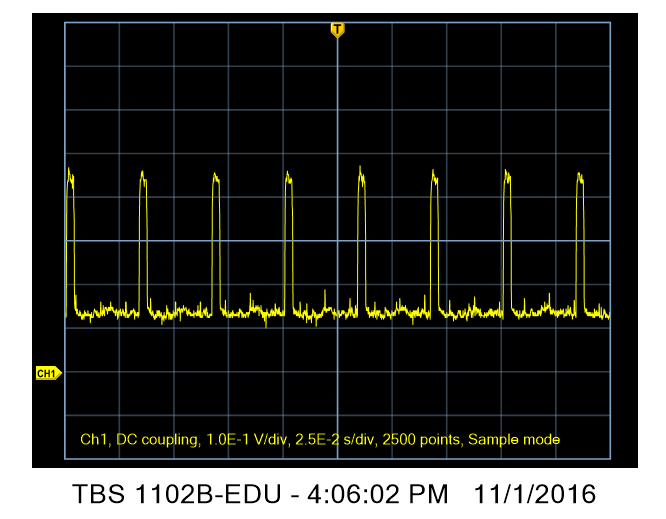

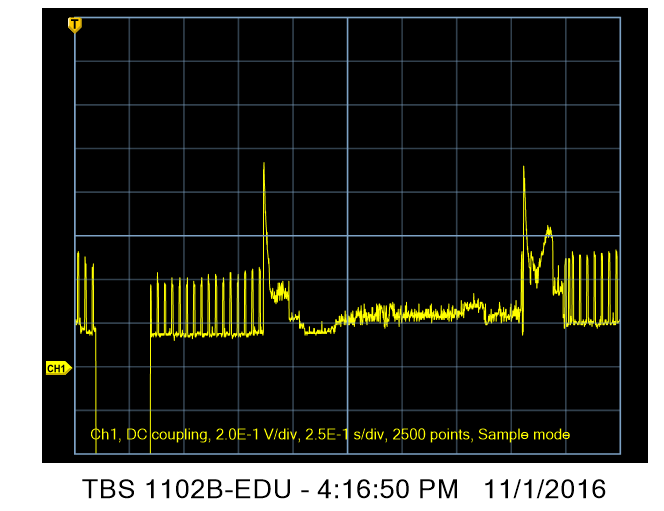
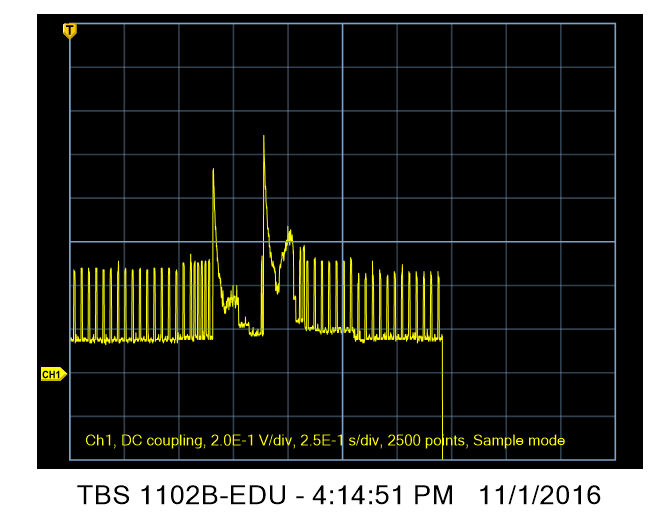
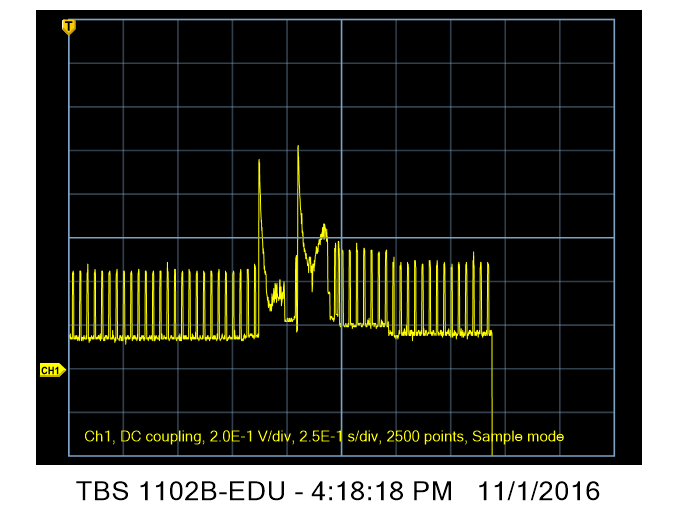
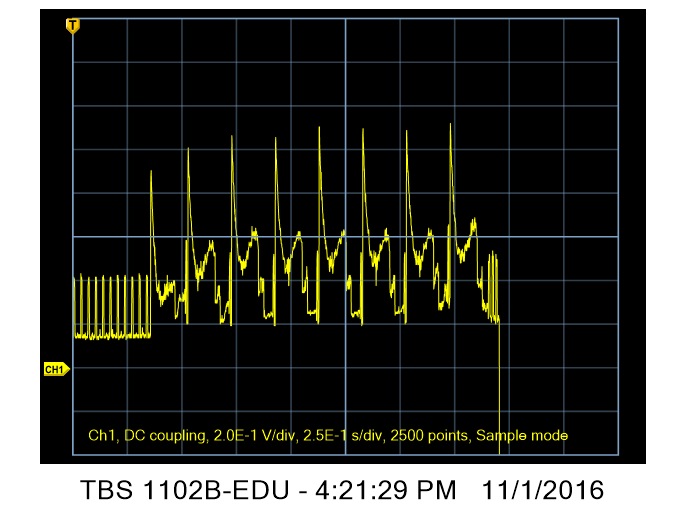
This is a very nice experiment, Jim.
Unfortunately you terminated the last chart just when things were getting interesting for me. The delta of pre to post burst is presumably the writing current of buffer to SD card. On the surface there seems to be two sipping levels…which are probably while it’s writing and after writing. We should be able to see this drop succinctly and at a different point after various numbered image bursts. The timing and duration of that dip would be instructive I think.
That distinctive and signature post-exposure curve is (I presume) the in-camera processing of that 42MP data. I doubt processing-wise Jpeg vs RAW+Jpeg vs RAW-only will make any substantive difference to that curve given there is a bitmap in the RAW file that needs to be demosaiced anyway. However, viewing compressed vs. uncompressed RAW might be a different story and be informative as to the camera’s underpinnings. I suspect that curve’s shape and duration would be significantly different to what we are seeing in all the other plots.
Bruce
Thanks. I’ll do some more work. I now believe the sipping is the result of display refresh. See the next post; I just added two images that indicate that that is likely the case.